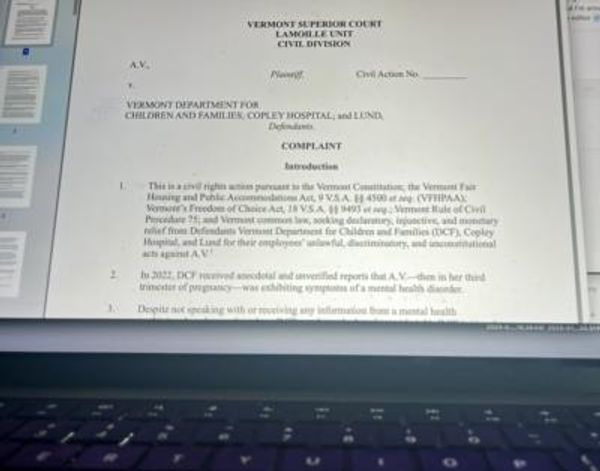
According to the Council of Dentists of Spain, bruxism is the dental diagnosis that has increased the most since the pandemic, almost quadrupling. In fact, its incidence among the population has gone from 6% to 23%.
Whether we are affected or not, we all know what this behaviour basically entails: clenching or grinding one’s teeth. But, in recent years, the concept has changed and is now classified into two distinct forms: sleep bruxism and awake bruxism. And they can be approached as two separate phenomena – although the two sometimes appear together.
While the first arises involuntarily while we sleep, the second manifests itself when we are awake. In the latter case, the person may be aware of their behaviour and, thus, stop it.
Two different phenomena
Currently, sleep bruxism is defined as “a masticatory muscle activity during sleep that is characterised as rhythmic (phasic) or non-rhythmic (tonic) and is not a movement disorder or a sleep disorder in otherwise healthy individuals.”
Awake bruxism is described as “a masticatory muscle activity during wakefulness that is characterised by repetitive or sustained tooth contact and/or by bracing or thrusting of the mandible and is not a movement disorder in otherwise healthy individuals.”
In other words, what we popularly think of as clenching/grinding our teeth when we sleep (either during the night or during the day) would be called sleep bruxism, while jaw clenching, sustained tooth contact, or thrusting when awake would be awake bruxism.
Although the two definitions seem to refer to very similar behaviours, their origin, the way they work, and how they should be approached are different.
In some clinical settings, both types can be considered a risk factor or sign of underlying disease, such as headaches (both common headaches and migraines) or temporomandibular disorders (which affect the jaw joint and the muscles that control its movement). And there is always the possibility that these two varieties of bruxism will have negative consequences: they can cause tooth wear and fractures, as well as muscle or joint pain.
But, what if bruxism were beneficial?
In any case, current research implies another important modification for the conception of bruxism: it is no longer considered a pathology but a mere motor activity. That is to say, it does not have to be harmful in and of itself.
Firstly, a 2020 study concluded that waking bruxism could be a stress release mechanism. And secondly, the variety that occurs while we sleep seems to be related to gastric reflux and obstructive sleep apnoea (pausing in breathing during nightly rest). Some authors hypothesise that it could play a protective role against the effects of both disorders.
The psychological factor
As for the origin of this behaviour, it is still not entirely clear, but risk factors such as alcohol, nicotine, recreational drug use, caffeine, some medicines, anxiety, and stress have been identified. Emotional stress seems to play an important role, especially in awake bruxism. In fact, it is considered the main trigger.
Along these lines, a recent study carried out by researchers from the Faculty of Dentistry of the Complutense University of Madrid compared samples of participants before, during, and after the COVID-19 pandemic. According to the researchers’ conclusions, sleep and awake bruxism could be influenced by different levels of anxiety: while the former would be related to passive stress (associated with worry or helplessness), awake bruxism seems to be linked with immediate, daily activities to a greater extent.
In a previous study, that same research team found that teeth grinders who watched stressful negative videos with scenes of pain had greater muscle tension than those who do not typically grind their teeth. This relationship supports the notion of a link between more immediate, daily stress and awake bruxism.
Effective treatments against bruxism
Therefore, and even though awake bruxism can be a release mechanism for stress, grinding one’s teeth can be prevented by learning to detect the habit (aiming to reduce the bracing of muscles in the first place) and by subsequently reducing stress levels through techniques for relaxation and coping.
With that in mind, perhaps one of the most effective treatments is biofeedback. This consists of having patients learn to identify and reduce muscle tension by adopting a jaw resting position thanks to the use of an electromyograph, a device that measures the electrical activity of the muscles.
Many people are unaware of the fact that for the jaw to be relaxed and at rest, there should be no contact between the teeth, as can be deduced from the definition listed above. The mere fact of being aware of that and trying to correct it reduces the incidence of bruxism.
Recently, mobile applications have been developed to achieve these two objectives. However, these types of applications are usually not sufficiently optimised and end up being a bit tedious for users.
Perhaps the easiest way to detect if we are clenching our teeth is to put Post-it notes in visible places (computer screens, mirrors, etc.) to act as a reminder. And, since stress is chronically present in our lives, we should regularly undertake relaxation techniques and techniques to control the bracing of jaw muscles – techniques that are simple and easy to fit into our daily routine.
Las personas firmantes no son asalariadas, ni consultoras, ni poseen acciones, ni reciben financiación de ninguna compañía u organización que pueda obtener beneficio de este artículo, y han declarado carecer de vínculos relevantes más allá del cargo académico citado anteriormente.
This article was originally published on The Conversation. Read the original article.







